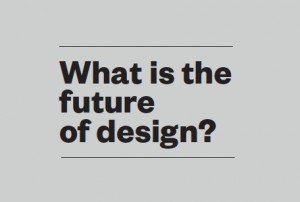A More Engaged Generation
Posted July 8, 2014

ESI has been designing new experiences for 35 years. Throughout the firm’s history, our work has adapted to new audiences and expectations. From our original work in the Brooklyn Children’s Museum, to large-scale, LED technology at Times Square, new interactive technologies have allowed our designs to grow. In the same instant, changes in audience ability, knowledge and expectations have demanded that we meet our audience where they are.
Design of all kinds is evolving along with designers’ ability to create new experiences. A recent opinion piece that explored this topic caught our attention. The article raised the banner of a new, upcoming generation that designers will have to design for.
In The Generation Raised on Touchscreens Will Forever Alter Tech Design, Olof Schybergson, CEO of Fjord, coins a term for the generation that is growing up with touch screens at their fingertips. This is Generation Moth. The screens in the world of Generation moth “always hold the promise of interactivity and something more engaging than the rest of the environment that they inhabit.” The base attraction and expectation of action through touch screens will define this generation.
Outside of creating a set of interactive expectations for this generation, Olof claims that designing for Generation Moth is going to demand a different set of skills and a new way of thinking. Olof writes that this fluttery generation will live a digitally mediated existence, “where most of their needs are met with the help of digital services.”
Their physical interactions with the world will be enacted through the touchscreen. Thus, the design of those services will be at the forefront of the design demand. And he asks, “how will designers and the companies that they work for maintain relevance to meet the expectations of this up-and-coming generation?” Designing for this generation will indeed be a challenge, but Olof’s presenting it as a demand coming from Generation Moth is the wrong approach.
The generation to come, whether they are Moths or not, will be trained by the generation of designers that came before it, the designers of today. Expectations and interactions, digital or physical, do not exceed the level of design that exists. The consumers have imagination and dreams of perfect products. We are helped along by the fabricators in the media, but consumers do not create the products that inspire these dreams.
To claim that an entire generation is going to redefine the way that today’s designers are going to have to work is an over statement, especially since they have yet to start defining the demand in the market or influencing innovation with their thinking. (Yet, we fully recognize that those two components will happen.) We did not know what the iPhone was until the iPhone was introduced.
A more likely scenario of change will involve a different aspect of design. The exponential pace of interactive development will increase with Generation Moth. An increased pace of design change may be the hallmark of this generation of users to come. These users will be flexible to interactive elements and fluid in their acceptance of mediated experiences. When designers don’t have to train their audience, can design without redundancies, can push envelopes of interaction because the users will expect to learn and be challenged, then the Moths will reach out to interact with new devices without compunction. The design field can then follow suit.


Join The Conversation